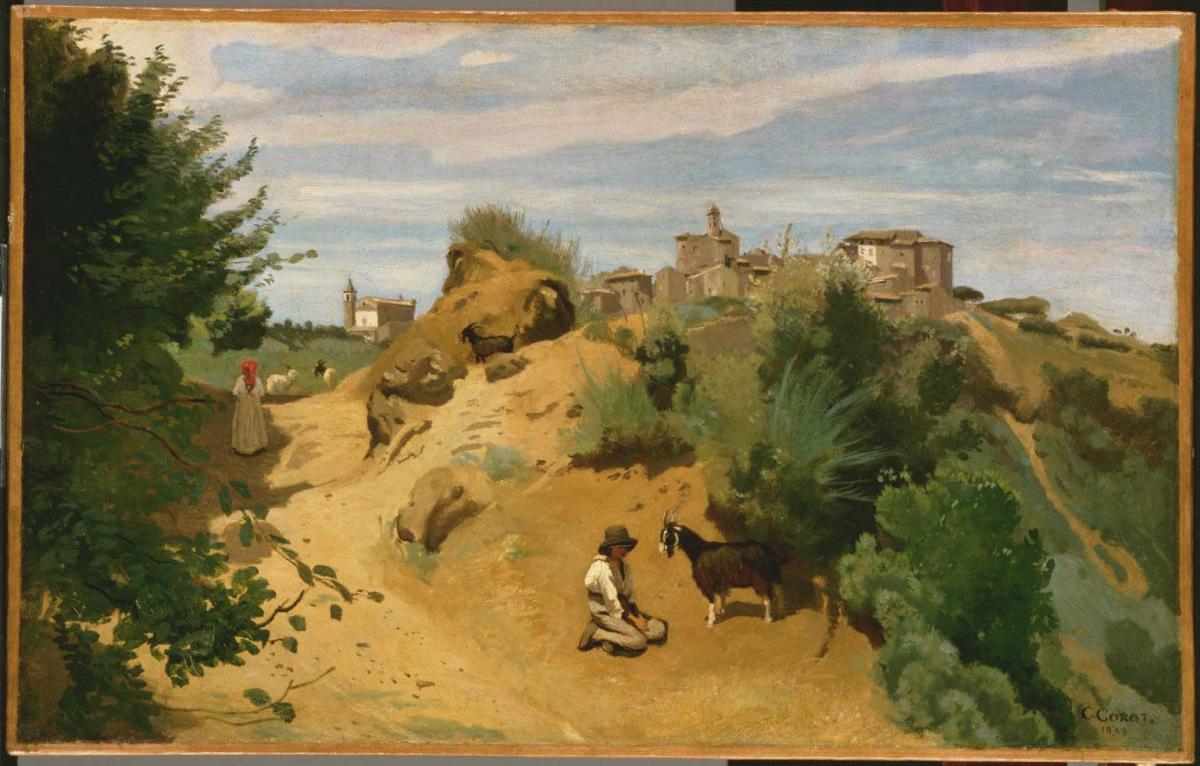Genzano
Jean-Baptiste-Camille Corot ( 1843 )

In 1843, approaching the age of fifty, Corot traveled to Italy for the third and last time, visiting the area south of Rome and spending most of his time in the Castelli Romani, where popes and patrician families had constructed their castles and fortified the towns since the middle ages. Between June 26 and July 27, Corot worked in the city of Genzano and around Lake Nemi. He painted Genzano from many viewpoints, and the Phillips version is the most significant among them, showing the city from below. In the background, from right to left, are the Cesarini Palace, Santa Maria della Cima, and the Church of the Annunziata. In contrast to the two previous studies, Corot enlivened this work with genre figures, who lend a more human scale and a note of piquant color to the tawny landscape. In the foreground a peasant boy kneels before a goat, and in the middle ground a woman walks along a path, her back to the viewer. The woman’s presence is emphasized by her vermilion headcovering, which adds visual weight to the relatively empty left portion of the canvas and neatly balances the composition.
At the outset of his career, Phillips was smitten by Corot’s late idylls and his quietly contained female figures. His interest was later to shift to the studies from nature in keeping with the twentieth-century reassessment of and preference for these works. This change in taste also reflects the fact that Phillips, while always responding strongly to romantic imagery, became increasingly sensitive over the years to considerations of composition and treatment. Yet far from portraying Corot’s sketches as a uniform group, he was sensitive to the artist’s pictorial repertoire and to his increasingly adept handling over time of a variety of coloristic and textural effects:
This famous picture of Genzano…shows a broader, more painterly touch than the exquisite little studies of the first visit in 1825 when in crystal clear light he built structures as firm as the architecture he depicted. It still reveals Corot’s preoccupation of the early years with a harmony of atmospheric colors and a well ordered composition of selected shapes. Now there is added a sensitive suggestion of tactile values and a maturing mastery of the brush….However much we may respect the pyramidal structure and the unerring register of tonal values, what we prize above all in such a picture is the caress of the canvas and the song that has been sung about the color and the texture of the soil and the remembered quality of the light and the dark accents of the boy and the goats and the sparkling silvery glimpse of the village of Genzano.
Corot’s early work in Italy played a decisive role in his artistic development. However, his experience in the French countryside, gained during nearly twenty years between his first and final visits to Italy, made possible this more loosely structured view of Genzano. As Phillips noted, Corot’s interest in this work lay less in geometry and more in the evocative aspects of color and light, qualities that he was to continue to explore in his poetic Salon landscapes.